Symphony Move Huge for Downtown
A big win for the orchestra and Downtown, with a minor impact on Marcus Center.
It sounded like a revolution for Milwaukee’s performing arts scene. In one week we were met with news that both the Milwaukee Symphony Orchestra and Milwaukee Ballet were poised to build their own performance space, meaning the Marcus Center for the Performing Arts would lose two of its main tenants.
As it turns out, the Ballet story, reported by OnMilwaukee.com, is quite misleading. Two sources close to the situation told me the ballet will not be leaving the Marcus Center and Anne Metcalfe, a spokesperson for the ballet, says “I can confirm that Milwaukee Ballet is not intending to build its own performance space.” But they might be looking to move their offices and ballet studio, now located at 504 W. National Ave., to a Third Ward location. Metcalfe would say only that “To best fulfill our mission, a possible new home for the Ballet has long been a consideration. We continue to explore options.”
As for the orchestra, there have been discussions of the MSO finding its own space for more than 30 years, which made me wonder about its $120 million proposal to renovate the old Warner movie theater at 212 W. Wisconsin Ave. into a symphonic hall. But I’m now convinced the project could and should happen and that it will be hugely beneficial for both the symphony and for Milwaukee’s downtown. This could plug the last major hole in Downtown, helping usher in a resurgence of W. Wisconsin Ave. and the Grand Avenue Mall.
MSO president Mark Niehaus says the project has a “triple bottom line” impact: (1) helping the symphony control its destiny and hike its earned revenue, (2) saving and preserving a gorgeous historic building (“We’re probably the only tenant big enough to do this,” he says) and (3) sparking a renaissance on Wisconsin Ave.
There’s actually a fourth bottom line, though it’s an artistic one: the old movie theater has far better acoustics than the Marcus Center’s Uihlein Hall, where the symphony has performed for nearly five decades. Back in the early 1980s I wrote a column for Milwaukee Magazine about the hall’s acoustics, with musicians offering countless criticisms. It simply wasn’t a good hall acoustically and fell short both in delivering a full, balanced sound for audiences and allowing musicians to hear each other.
Former music directors like Lukas Foss complained about the acoustics while his successor Zdenek Macal tended to push for a louder sound to make up for the problem. This was pointed to as a reason the MSO was panned in a 1989 performance at New York’s Carnegie Hall, with the New York Times’ Bernard Holland infamously declaring “the Milwaukee Symphony is not a very good orchestra.” (Even then this was a rare critical pan.)
In the 1990s improvements were made in the hall, including the addition of a system to electronically enhance the reverberation, which helped, but didn’t eliminate the basic problem of the hall’s configuration. Uihlein “is about as wide as it is deep, whereas the Warner theater is more of a shoebox,” Niehaus notes — meaning longer than it is deep, like most of the great symphonic halls. “Uihlein is much better for theater and opera and ballet.”
As far back as 2001, the symphony did an acoustical test at the Warner, Niehaus notes. The Marcus Corporation, which owns the theater, spent considerable money to eliminate its old division into a duplex theater, simply so the sound of the entire hall could be tested. A plywood stage was built and the orchestra tried out the hall for an entire day. “It was an unqualified success,” Niehaus recalls.
Niehaus was then the symphony’s principal trumpet player and he was struck by the Warner’s wonderful, “naturally reverberant” acoustics. In 2012, Niehaus was hired as MSO president, and it may not be entirely a coincidence that the first viable attempt to create a new hall has been overseen by a former musician. (Though Niehaus says it’s all driven by business reasons.)
The symphony was left performing in a hall where it couldn’t get the prime holiday dates, because the ballet had it locked up for the Nutcracker. But the situation got worse after the Marcus Center, under pressure to lower its annual subsidy from Milwaukee County officials, began booking touring Broadway shows in the mid-1990s.
As a result, Niehaus notes, only 23 to 25 of its 40 weeks of performances are held at Uihlein, with venues like the Pabst, Riverside, St. Josaphat Basilica and others filling the gaps. Worse, the dates it can get for Uihlein are often the less desirable ones. Even worse, the MSO typically has to wait till the dates for the Broadway shows are filled before they can nail down guest musicians and conductors.
All of these constraints significantly reduce the earned income potential of the symphony. With its own hall, the MSO could skip bad times like Easter Week, and maximize boom times like the Christmas and New Year’s season, while avoiding concerts in smaller venues like churches and being better able to compete with other orchestras internationally to nail down top performers and conductors. The MSO could also gain further revenue by renting out the hall for the 12 weeks it’s not in use. And with Gary Witt’s empire of the Pabst, Riverside and Turner Hall nearly at capacity, the refurbished Warner would give him another unique architectural gem to sell to touring acts.
The project as envisioned would purchase and develop the neighboring two-story building at 200-208 W. Wisconsin Ave. It would be connected to the new concert hall through an adjoining wall and converted into an expanded lobby, which could include a bar area, box office, coat check and restrooms. And all the revenue from the bar and other revenue makers would go to the symphony. The theater building has 12 floors and Niehaus may reserve its top two floors for a penthouse-level small performance space that could bring in more audiences and revenue.
The theater building’s basement could provide dressing rooms for musicians and small warm-up spaces. The MSO would also save money spent trucking instruments in and out of Uihlein; they would simply stay at the symphony’s new home.
Niehaus says the MSO has raised half of the $120 million needed, which would include $20 million in endowment money. Much of it is pledges contingent on the project happening but some of it is cash given as venture capital to get the project rolling. As for the problem the Milwaukee Art Museum faced, when its Calatrava project ran over budget and ate up the endowment money intended to spin off annual operating support, Niehaus says “we will have a guaranteed maximum price negotiated with a contractor before a shovel hits the ground.”
Music lover Myron Heaton, who created the Grand Warner Theatre Trust to save the historic theater and whose organization has now essentially been folded within the MSO effort, say Niehaus has faced a divided donor community, with “some not wanting to leave Uihlein, some wanting to build a new hall, and some favoring a move to the Warner.”
Grand Warner Theatre (2013)
But Niehaus exudes confidence about raising the money, and selling the project. For older suburban MSO fans, a location on Wisconsin Ave. may be daunting, but he notes the Water Street was hardly a prime location when the PAC opened in 1969.
And the reality is that Downtown’s west side is about to explode, with the Bucks arena and Live Block soon to open, with some 700 residential units being developed on or near Wisconsin Ave., with aggressive new local owners redeveloping the Grand Avenue mall, with a glitzy new hotel project likely to fill the empty block on 4th and Wisconsin, and with Marquette University expanding as far east as 7th street. Symphony goers will be able to park in the Grand Avenue’s huge parking lot, which gets most of its current customers during the day; the mall’s co-owner Tony Janowiec is thrilled about the MSO plan and is nationally known for creating a pleasant, convenient experience in his parking lots.
As for the impact on the Marcus Center, it will lose at least 23 weeks of rental income, but I’m told it amounts to well less than a tenth of its $11.3 million annual budget. Marcus Center President Paul Mathews was out of town and unavailable for comment, but County Executive Chris Abele expressed confidence the Marcus Center would do fine.
“There are some scalable costs [to reduce expenses] and I wouldn’t underestimate the Marcus team’s ability to fill up more dates,” he says. “If I were on the Marcus Center’s board I would be talking not about the loss but where the opportunities lie.”
As for the symphony’s relocation, Abele, a former MSO board member, hailed it as a home run. “Uihlein Hall was not really designed for a symphony,” he notes. “The Warner building is architecturally distinctive, it’s right downtown, and it’s going to have an increasing density and activity around it. The is as optimum a time for the symphony to move as there ever will be.”
Inside the Grand Warner Theatre (2016)
Rendering
If you think stories like this are important, become a member of Urban Milwaukee and help support real, independent journalism. Plus you get some cool added benefits.
More about the Bradley Symphony Center
- Friday Photos: Flood Delays Opening of Bradley Symphony Center - Jeramey Jannene - Sep 11th, 2020
- Plats and Parcels: Symphony Hangs New Sign - Jeramey Jannene - May 10th, 2020
- Eyes on Milwaukee: Symphony Center To Get New Sign This Weekend - Jeramey Jannene - May 6th, 2020
- Friday Photos: Inside the Bradley Symphony Center - Jeramey Jannene - Feb 14th, 2020
- Friday Photos: Symphony’s New Home Takes Shape - Jeramey Jannene - Jan 17th, 2020
- Eyes on Milwaukee: Symphony Moves a 625-Ton Wall - Jeramey Jannene - Aug 13th, 2019
- Friday Photos: Full Speed Ahead on Symphony Project - Jeramey Jannene - Sep 7th, 2018
- Eyes on Milwaukee: Symphony Breaks Ground on New Hall - Jeramey Jannene - Jun 21st, 2018
- Eyes on Milwaukee: Symphony’s Grand Theatre Plan Moves Forward - Jeramey Jannene - May 8th, 2018
- Eyes on Milwaukee: Committee Okays Symphony Plan for Grand Theatre - Jeramey Jannene - May 1st, 2018
Read more about Bradley Symphony Center here
Murphy's Law
-
Top Health Care Exec Paid $25.7 Million
 Dec 16th, 2025 by Bruce Murphy
Dec 16th, 2025 by Bruce Murphy
-
Milwaukee Mayor’s Power in Decline?
 Dec 10th, 2025 by Bruce Murphy
Dec 10th, 2025 by Bruce Murphy
-
Total Cost of Foxconn Is Rising
 Dec 8th, 2025 by Bruce Murphy
Dec 8th, 2025 by Bruce Murphy


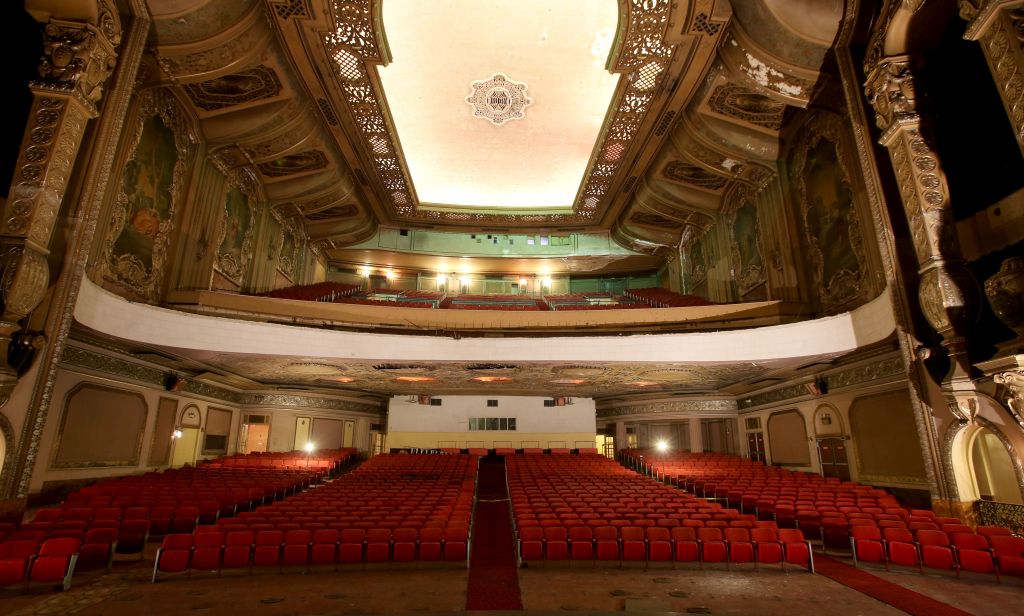
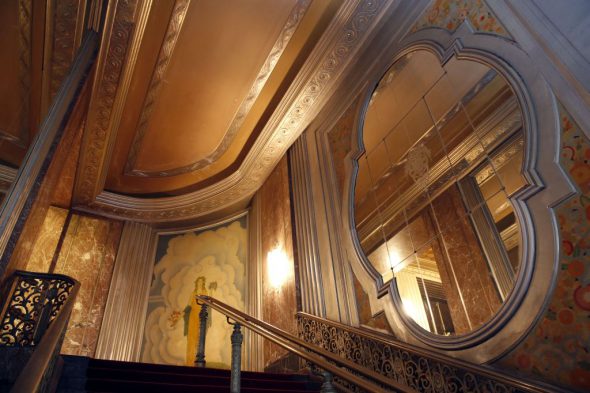
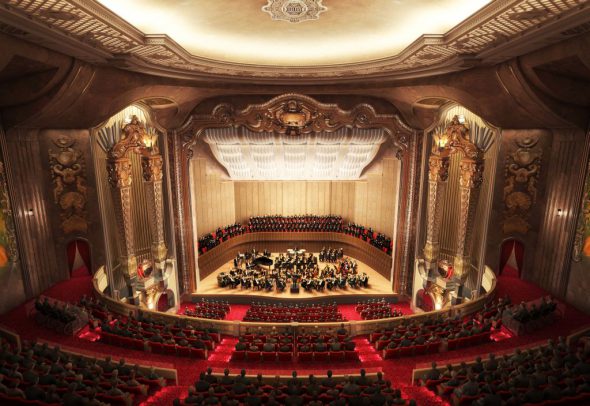
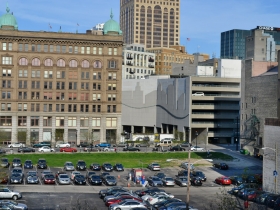
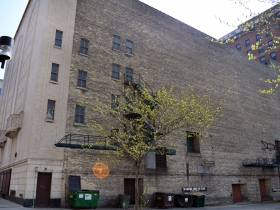
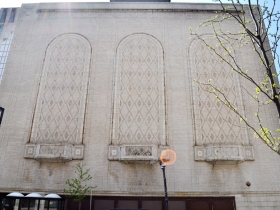
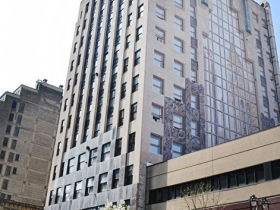
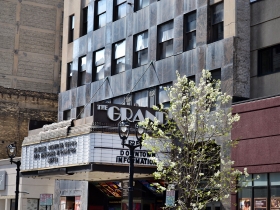
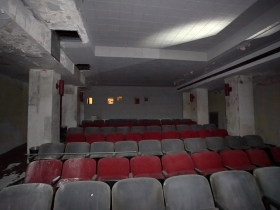
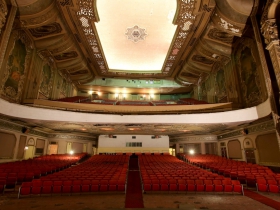
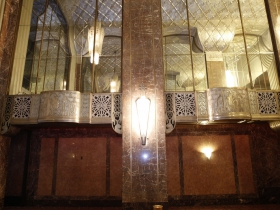
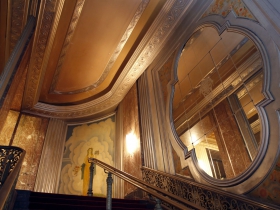
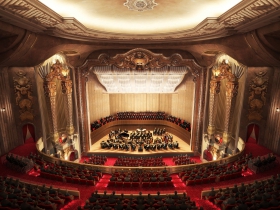


















Marcus Center will not be in good place. They need to replace their HVAC system which will cost millions and they’ll be soliciting the same group of donors while enduring a cut in operating revenue from losing the MSO.
Chris, the Marcus Center will soon be owned by the Entertainment District that’s building the new arena. Let the Bucks and new arena pay for refurbishing the PAC, it literally is the least they could do.
Bruce, I am in total agreement with you on this. And, thanks for sharing all the info on why this is important for the symphony, artistically.
A new home for the MSO in the old Warner Grand will be transformative for this part of downtown. Franky l, I think its bigger than the Bucks Arena and the Couture–as great as those are for downtown. Those projects are all “donut” projects. This one helps fill the “hole.”
I love reading about how the symphony is already talking to the new Grand Ave. owners about how they can bring critical synergy to their respective projects and to the area. This part of downtown needs a little love and this move is an amazing valentine if it can be financed. (I would love to be a wealthy Milwaukee philanthropist right now. My giving to this project would have such amazing impact on the City for generations to come.)
Before the Grand Ave. came out with its reactivation plans, I had begun to wonder if one or more arts groups could make W. Wisconsin Avenue their home. Where I am here in Chicago, the Joffrey Ballet has a prime location and presence on State Street. Big sign. You walk by at night and see rehearsals going on in its 3rd floor digs. That’s cosmopolitan! I had wondered about the Milwaukee Ballet moving into the Grand Ave. (I think the Third Street location is a mistake, especially given the symphony’s latest plans. total waste for a 1-2 story structure.) And, I wondered what would be keeping the Wisconsin Conservatory of Music in the old house on Prospect. Having the conservatory downtown could provide further synergy, and imagine it being located in the floors just above the new symphony hall. I would love to see more residential in parking lots between Plankinton and 3rd, and Wisconsin and Kilbourn. And, what would it be like to activate the alleys in between with, restaurants, cafes, bars, a couple of jazz and blues venues, Improv and comedy, etc.
Downtown Santa cannot come too quickly for me. 😉
What an incredible Christmas present for the City of Milwaukee and for all of us who remember this theater and the others that dotted Wisconsin Avenue years ago. While the memories of movies seen here and at the Esquire and Strand movie theaters are fond, to hear of another of Milwaukee’s landmark theaters being saved is music to my heart. I applaud this move along with the rest of the efforts to revitalize Wisconsin Avenue. I for one cannot wait to hear The Symphony play here.
If you build it they will come.
This is an energizing, dynamic plan that will pay dividends for decades.
Bruce, the Grand Theatre and the building itself is owned by various owners. If by chance the MSO does move in that spot a miracle has happened. The property is one of a very few downtown that has not been rehabilitated recently. Milwaukee Downtown is a big winner if this building gets some much needed TLC.
Tim,
Yes, Milwaukeeans might reasonably hope the Bucks would show their gratitude for all the public “housewarming gifts” they’ve received by funding a Marcus Center renovation–or any civic project. Unfortunately, the Bucks’ donations so far have been pathetic token giving–done for PR. There are no indications that might change.
Chris Abele’s plan, on hold, is to dump the Marcus into the Wisconsin Center District (WCD), a quasi-governmental state-owned authority that will officially “own” the new arena (though the Bucks will get all the profits). If the Marcus gets spun off into the WCD they would be fifth fiddle (after Bucks Arena, Convention Center, Panther Arena and Milwaukee Theater). Marcus would have little status and probably no control over their destiny–and would have to grovel for any funding.
The Marcus has been asking the County for years to be able to develop a multi-use parking and commercial structure to generate income and greater autonomy (like what MSO plans to do). That seems a much-more hopeful prospect than being tethered to Bucks, Inc. in a contrived alliance.
Under a WCD umbrella, the Marcus could be vulnerable to a management takeover by some entity running the Bucks Arena–perhaps by a big multi-national entertainment management conglomerate.
In any case, the Grand Theater project could be truly grand and a big boon.
I cannot wait to hear the symphony in this perfect, beautiful, historic place! What a smart move for all. Cheers!
I think this is the best news of the year–for the MSO, for the arts in general, and for West Wisonsin Ave. This is way overdue for the MSO, which deserves its own space, and for the gorgeous Warner Grand.
As for the building itself, I hope the MSO looks south for inspiration. Chicago’s Fine Arts Building, a block south of Orchestra Hall, is a similarly sized structure that’s filled with art galleries, arts studios and offices, and other arts-related businesses. The penthouse jazz space idea sounds great, but if not that, how about a restaurant catering to MSO patrons?
I attended those acoustical tests back in 2001. Maybe it was dim and dark, but I have no recollection of the Grand being so beautiful and ornate as it appears in these pictures.
The time was all wrong for the MSO to attempt such a project then, but the time has finally come to act on this very good idea. Imaginative, civic-minded ownership of the Grand Ave has a lot to do with that. Best of luck to Mark and all involved.
It’s cool that retired music teacher Myron Heaton’s found willing partners in MSO for a big vision.
http://archive.jsonline.com/news/milwaukee/theater-fan-trying-to-revive-historic-grand-on-wisconsin-ave-b9948446z1-214556411.html
I’m all for saving a historic movie theater and filling it with a symphony that can make use of its great acoustics!
Anybody who’s spent any time attending MSO concerts knows which few seats deliver the best, most balanced, sound. And those seats are super expensive and held onto closely by season ticket holders. Just the thought that maybe, just maybe, there would be a few more “good” seats available for those of us who are patrons, but not rich patrons, why, we’d go bonkers! I’m all for it, Bruce.
Am I the only one that recalls the previous sound tests in the early 2000s showed it to have poor acoustics for a symphony?
They should consider a roof-top cafe on 200-208 W Wisconsin. They should also look into constructing a skywalk from that building to the Grand Avenue.
Also, I’d like to donate toward this effort, but the MSO hasn’t started fund-raising yet, so there seems to be no simple way to do this. Can somebody from MSO describe how I can designate money for the Grand Theatre restoration?
Tom D, there is no online link to donate at this point. MSO says “if you would like to make a gift contingent on the Symphony Center/Warner Grand Theatre initiative moving forward, please contact Pam Garvey at (414) 226-7857 or Alice Wilson at (414) 226-7804.”
According to this website, the acoustics are excellent for the symphony.
http://cinematreasures.org/theaters/1903
The beautiful rendering of renovated Grand Warner Theater shows a deep stage with additional seating curving behind (like Chicago’s Orchestra Hall).
Someone has made a point elsewhere that the movie theater design did not include any real depth to the actual stage. From the outside, the “fly” of the theater (area directly above the stage for hanging a theater screen, curtains, lights and backdrops) appears to be located right up to the sidewalk of N. 2nd St.
If you can’t move the proscenium forward, and you can’t push the back wall out (east), where they gonna get more space? Just asking.
Gary, I can’t speak for the MSO, but I’d think the main issue is whether stage is big enough to fit the orchestra. Unlike theater or dance, there’s no need for backstage sets, props, etc. Musicians can enter from the wing or wings.
I’d wonder if one of the non-MSO events for the Grand would be as an additional venue for the Milwaukee Film Festival. There aren’t many venues left if the Festival wants to continue to expand and a theater right downtown seems to fit into the center of gravity of the festival.
Back in 2001, the idea was to gain stage depth by building out over 2nd St. Maybe that’s still in the cards.